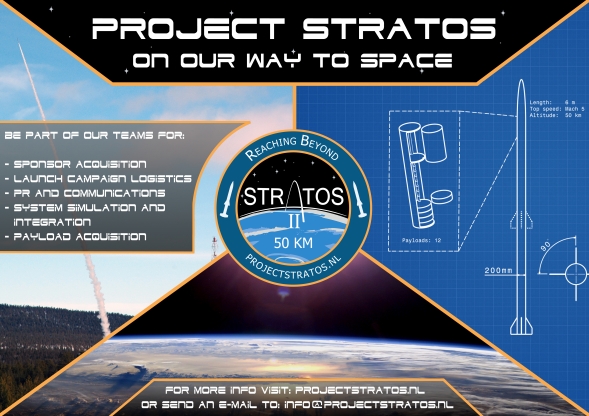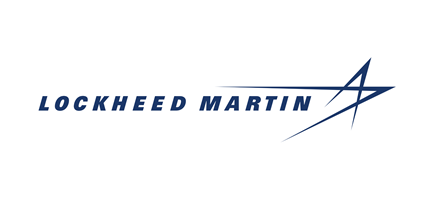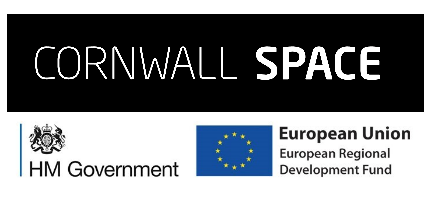UKSEDS have been corresponding with our international colleagues and have had recent contact with a Dutch group called DARE.
Delft Aerospace Rocket Engineering (DARE) are a student organisation linked to the TU Delft in the Netherlands that has existed for a little over ten years now. They design, develop, build and launch their own rockets with the goal to get students more interested in rocket science. Over the years they have worked on a number of projects, including the Dutch CanSat competition, for which they have been providing the rockets for a number of years now. Currently, most of their members are involved in the Stratos II projects, which has the aim to build their own sounding rocket, to launch payloads to an altitude of 50 km.
UKSEDS may be able to provide a proposal for a scientific payload. A project would need, at a minimum, on the experiment side, very committed team members on science, electronics, and mechanics, and in addition one team member would need to be dedicated to pushing the project forward. If we can get that (preferably at one institution?) we think UKSEDS would be able to form a case that Stratos II would be able to use if they wished – please let us know more details if you would be interested in a UKSEDS payload Stratos II 🙂 E-mail: [email protected].
Here we describe information regarding the payload availability within the Stratos II rocket, the planning for these payloads and more detailed specifications for these payloads DARE require.
Payload availability and planning
Currently the planning for the launch of Stratos II is still in the second half of 2013. The aim is to launch at the end of the summer months. When keeping this in consideration and looking at where DARE are now, they consider the first half year of 2013 to be the best time slot for payload customers to work on the payload. For students this first half year will also roughly correspond with one semester in their academic years, which will hopefully make sure it will fit more easily in their planning.
This means globally that the detailed agreements concerning payloads should be made before the end of February. During this period design can already be done and we assume that the preliminary designs of the payloads can be done near the end of March. At this point they can negotiate the final interfaces between the rocket and the payload: what does the payload need and what can we offer. Depending on how fast a payload is done the intergration and testing can be done from May onwards.
These were their first ideas of the planning. Hopefully you would find this a reasonable option as well. It would be helpful if members can provide us with feedback on this as well. We can negotiate to see what planning would be feasible and what not.
Specifications
Now DARE have more specifications ready for the payloads onboard the rocket. Included with this article is a document with preliminary electrical specifications. These detail what the rocket electronics can supply to the payload and what requirements the payload should adhere to.
Next to these electrical specifications, a few more details have been set regarding the physical specifications. Concerning the physical dimensions of the payloads, DARE are aiming to make sure that PCB’s that adhere to the CubeSat standard size can be mounted in the payload capsule. As the CubeSat standard is know and recognized the world over we think this is a good base layout for the payloads onboard Stratos II.
Over the next few weeks DARE want to make a number of final decisions regarding our propulsion system. This will then also give more clearity on the accelerations and launch loads the payloads will endure and which flight regimes the rocket will pass through.
Finally, the whole cooperation between payload customers and the Stratos II team will always be open for negotiations. If you find that you want to perform a certain mission with your payload but are hindered by requirements posed by DARE, they can look into these requirements with us and can see if we can negotiate these requirements and come to an agreement.
Interested people, please visit DARE & Stratos II’s websites: http://www.dare.










No comments yet.